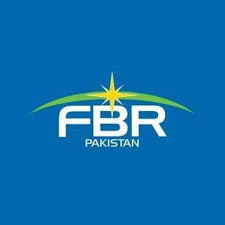Employee Contributory Fund Return: Monthly and Yearly Filings
Introduction
An Employee Contributory Fund (ECF) is a vital component of employee benefits, providing financial security for retirement, health, or other welfare needs. The administration of these funds involves meticulous record-keeping and periodic filings, both monthly and yearly. This article delves into the intricacies of these filings, exploring their importance, process, compliance requirements, and best practices.
Understanding Employee Contributory Funds
An ECF typically involves contributions from both the employer and the employee, set aside for future benefits. The nature of these funds can vary, including pension funds, provident funds, health insurance, and others.
Monthly Filings
Monthly filings are essential for continuous monitoring and ensuring the fund’s compliance with regulatory standards.
Contribution Details:
Each month, detailed records of both employee and employer contributions must be compiled and reported.
Member Statements:
Updating individual member statements to reflect the latest contributions and fund value.
Regulatory Compliance:
Ensuring that the monthly contributions align with the legal requirements, such as minimum contribution rates.
Yearly Filings
Yearly filings provide a comprehensive overview of the fund’s performance and compliance over the fiscal year.
Financial Statements:
Preparing and filing complete financial statements including balance sheets, income statements, and cash flow statements.
Audit Reports:
Many jurisdictions require an annual audit of the ECF by an independent auditor, ensuring the accuracy of financial reports and compliance with regulations.
Compliance Reports:
Yearly filings must include reports on compliance with all regulatory requirements, including any changes in legislation.
Importance of Filings
Transparency:
Regular filings ensure transparency in the management of the fund, building trust among contributors.
Regulatory Compliance:
Adherence to legal requirements prevents legal repercussions and penalties.
Financial Health:
These filings provide insights into the financial health and viability of the fund.
Challenges in ECF Filings
Complex Regulations:
Navigating through complex and often changing regulatory environments can be challenging.
Data Management:
Efficiently managing large volumes of financial and personal data is crucial.
Timeliness and Accuracy:
Ensuring timely and accurate filings is essential but can be resource-intensive.
Best Practices for ECF Filings
Robust Record-Keeping:
Implementing effective systems for accurate and efficient record-keeping.
Technology Utilization:
Leveraging technology for data management, calculations, and filings can enhance accuracy and efficiency.
Regular Audits:
Conducting regular internal or external audits to ensure accuracy and compliance.
Stakeholder Communication:
Keeping employees and other stakeholders informed about the fund’s status and any changes.
The Role of Technology in ECF Filings
Technological advancements have significantly impacted how ECF filings are managed. Automation and financial software have streamlined data processing, calculations, and report generation, reducing the likelihood of errors and enhancing efficiency.
Compliance with International Standards
For multinational corporations, complying with international standards and varying regional laws adds an additional layer of complexity to ECF filings. It’s crucial to understand and adhere to these diverse requirements.
Preparing for Audits
Documentation:
Ensure all financial transactions and decisions are well-documented.
Reconciliation:
Regular reconciliation of accounts to ensure accuracy.
Audit Trail:
Maintain a clear audit trail for all transactions.
Future Trends
Digitalization:
The move towards fully digitalized filing systems is expected to continue, enhancing efficiency and accessibility.
Global Reporting Standards:
There may be a shift towards more standardized global reporting standards for ECFs.
Integrated Reportin:
Reporting may evolve to include a broader range of data, including non-financial metrics.
Conclusion
The process of monthly and yearly filings for Employee Contributory Funds is a crucial aspect of fund management, ensuring both compliance and transparency. As the regulatory landscape continues to evolve, so too must the strategies and systems employed in these filings. Embracing technology and adhering to best practices in record-keeping and reporting are key to managing these processes effectively. With the right approach, these filings can not only meet regulatory requirements but also provide valuable insights into the health and performance of the Employee Contributory Funds, ultimately benefiting both the employees and the organization.



